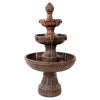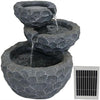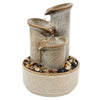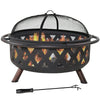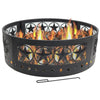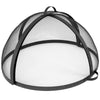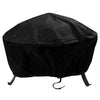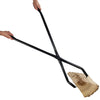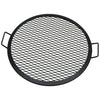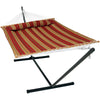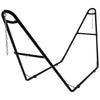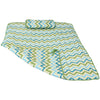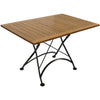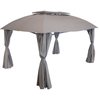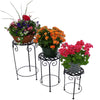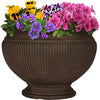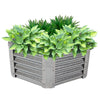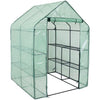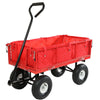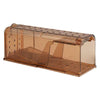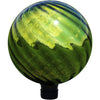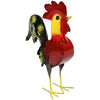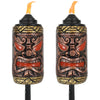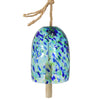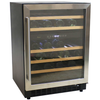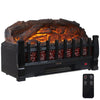Gardeners view their flower beds and vegetable patches as their pride and glory. However, other critters view them as their own personal salad bar. Beautiful blooms and leafy greens can be tasty treats for a variety of insects, rodents, and other animals. The battle to defend your garden can seem never ending, but there is a way to protect your plants. In order to defeat the enemy, you must first know the enemy, and you can learn a lot about what is eating your plants by examining the clues they leave behind.
Insects
Caterpillars and Larvae
Signs of Damage: Holes between the veins of the leaves, black spots, and frass

Before they grow into beautiful butterflies, you may see a very hungry caterpillar or two in the garden. Like the character in the beloved children’s book, these critters tend to eat their way through a variety of leaves and stems leaving a trail of holes and spots in their wake. They may also leave behind tiny droppings known as “frass”. Caterpillars tend to make gradual progress feeding at night and spend the day curled up beneath the soil at the base of the plant.
Caterpillars may be annoying at this stage of their life, but they ultimately grow into butterflies and moths which are good pollinators to have around your garden. Because of this, you don’t want to kill them. Instead, simply inspect your plants regularly. When you spot a caterpillar, pluck him off the plant and transplant him to a more convenient part of your space.
Beetles
Signs of Damage: Plant discoloration and skeletonized leaves

Japanese beetles, viburnum beetles, and cucumber beetles love to feast on the plant tissue between the veins of a leaf, often eating entire sections and leaving behind the skeletal remains. Unfortunately, beetles are also crafty escape artists, often dropping from leaves to the ground to avoid detection.
When it comes to managing beetles, an ounce of prevention is worth a pound of cure. Use row covers or mini greenhouses to keep your plants covered and keep these pesky insects from finding your plants. Be sure to look under leaves and twigs to find eggs and larvae and remove them.
Sucking Insects
Signs of Damage: Raised pimples on leaves, yellow mottling, honeydew, and tiny holes

Insects like aphids, squash bugs, and spider mites are notorious for the damage they cause to plants. These pests gather on the underside of leaves and suck the juices out of them. In case that’s not bad enough, they can leave behind a sweet, sticky residue called honeydew that attracts ants.
There are several ways to manage this type of insect. Use soapy water to wash them away from leaves, just be sure to get both sides as they often hide on the underside of leaves. If you’re struggling with an aphid infestation, try introducing ladybugs to your garden. Not only are these friendly creatures hungry for aphids, they are also useful pollinators.
Rodents
Rabbits
Signs of Damage: Clipped angled plants, droppings, and gnawed woody stems

Rabbits may look cute and cuddly, but they can cause a lot of damage to plants and vegetables. They enjoy munching on young stems and buds. They will also eat up entire flowers like tulips and pansies. Most of the damage occurs close to the ground and has a neatly cut 45-degree angle from where they chewed the plant.
Placing physical barriers like chicken wire fences and covers around your plants can help protect them from hungry rabbits. Another creative way to keep these critters away is by planting marigolds. Marigolds release a unique scent that a variety of creatures find unpleasant, including rabbits.
Squirrels
Signs of damage: Uprooted bulbs and seedlings and chewed fruits and vegetables

Squirrels are chaotic creatures who can cause a variety of damage in your backyard (for more information, check out our article How to Stop Squirrels from Destroying Your Garden and Patio). Squirrels often dig up plants while they are burying acorns or will snack on your planted bulbs. They also enjoy sampling fruits and vegetables in your garden.
Scent can be a powerful tool to keep squirrels away from your plants. Like rabbits, squirrels are also not a fan of marigolds and hate the smell of mint as well. Another, admittedly strange, scent that squirrels avoid is the smell of Irish Spring soap. Grate a small amount into a pair of old pantyhose and hang it near your plants to deter them.
Voles
Signs of Damage: Trails in the lawn, toppled plants, and eaten bulbs and tubers

Similar to their carnivorous cousins, moles, voles are burrowing creatures who make their homes underground. Not only can they build tunnels in inconvenient places, they also love to eat up plants that they find underground like tubers, root vegetables, bulbs, and onions.
Make your lawn less comfortable for voles by keeping your yard clean and free of debris. Installing ultrasonic pest stakes around your yard can also deter voles by sending vibrations throughout the earth.
Birds and Mammals
Deer
Signs of Damage: Torn stalks and leaves with ragged ends, tracks, and antler rubbings

When it comes to garden damage, most people are constantly on the defense against deer. Hungry deer will often come to your yard to eat their fill of fruits, vegetables, hostas, tulips, and lilies. The telltale sign of deer damage is the ragged ends of the plants left behind. Deer do not have upper incisors so they often tear the vegetation away when they eat. They are also tall enough to reach branches or over short fences.
Items like plant covers, greenhouses, and tall fences can help keep deer away from your plants. Like squirrels, deer also have a distaste for the scent of Irish Spring. Deer also have an aversion to human hair so save your hair clippings if you trim your hair at home. Solar-powered deterrents that mimic the look of flames can also help keep deer away.
Racoons
Signs of Damage: Uprooted plants, missing fruits and vegetables, and toppled corn stalks

Racoons will eat just about anything they can get their little hands on. While they tend to frequent your trash cans for food, they will also enjoy fruits and vegetables in your garden. They have a real craving for sweet corn. To make things more difficult, racoons are nocturnal and have the ability to climb over fences.
So how do you keep them away? For starters, try to remove any potential food source apart from your garden. Cover your trash cans, keep pet food inside, and try to clean up any fallen fruits or seeds from trees. For additional protection spread wood ash around your yard as racoons do not like the smell. Racoons also dislike squash if you want to plant a racoon-proof vegetable.
Birds
Signs of Damage: Uprooted seeds and pecked produce

Birds can be very helpful to gardeners. They eat pesky insects and weeds. However, once they turn their eye towards crops and flowers, they seem less helpful and more of a nuisance. Seeds are a primary part of a bird’s diet and they don’t always stick to the bird seed left in a feeder. Birds can find seeds while they are still in the ground or peck them out of fruit.
Birds can temporarily be scared away by items such as wind spinners and wind chimes, but they will grow accustomed to them over time. In order to avoid this, keep moving them around the yard to keep birds on their toes. Another way to protect your plants is by placing bird netting over shrubs and trees.
Humans
Signs of Damage: Missing produce, sticky face and fingers, and apple cores

Perhaps the craftiest of garden culprits is… other humans. Smaller humans love to sample berries or sweet peas, but a fully grown adult human is known to snatch an apple or two off a tree branch as a quick snack. Signs of a hungry human can include sticky fingers and a suspicious amount of missing produce in a short time, especially if you have a particularly bountiful harvest.
Unfortunately, the only way to keep humans at bay is to snap up your harvest before the rest of the family finds out.
There may be a whole host of creatures out there, ready to eat up your plants and flowers, but knowing what critter is after your plants is half the battle. Follow the clues left behind and you can discover the garden culprit and take the proper steps to defend your garden.
